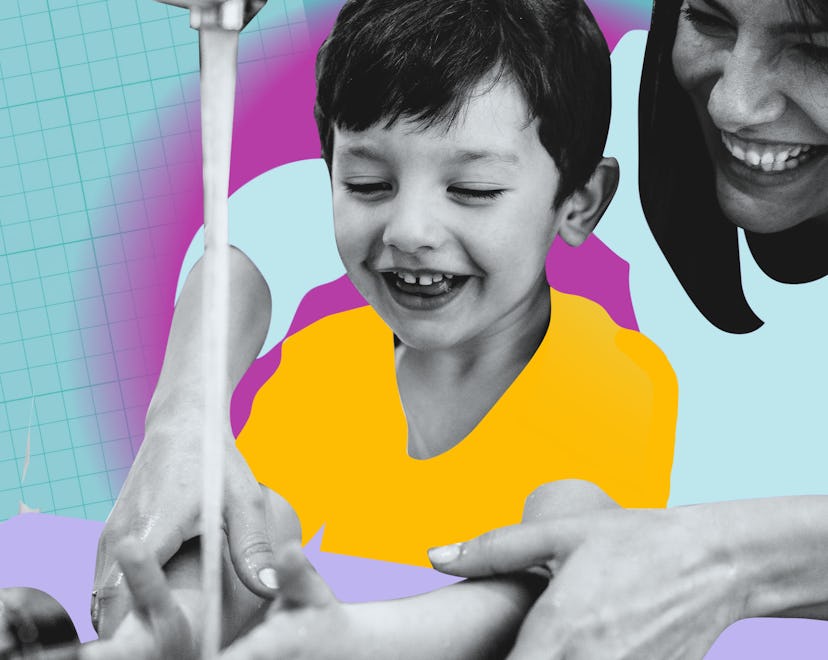Parenting

So Your Preschooler Has RSV & You're Worried About Your Newborn. Here's What Pediatricians Suggest.
A doctor on how to approach your worst fear, practically speaking.
When I first brought my newborn baby home from the hospital at the onset of RSV season, I kept my 2.5-year-old masked for so long that I wondered whether his baby sister would ever recognize his bare face. (Can you tell I run anxious?)
Sure, I’m neurotic, but it wasn’t just that: Infecting a newborn with RSV is a very real risk when they live with a Petri dish of a toddler. And this particular virus spreads like wildfire in classrooms and other public spaces via respiratory droplets and infected surfaces. It can also hit infants particularly hard.
Respiratory syncytial virus (RSV), which is marked by a runny nose, cough, and fever, is extra scary for newborns 3 months old and younger because it puts your baby at risk of developing pneumonia or bronchiolitis, a lower respiratory infection that causes inflammation in the small airways of the lungs, says Dr. Zachary Hoy, board-certified pediatric infectious disease specialist at Pediatrix Medical Group.
The main symptoms of lung infection — trouble breathing, faster breathing, and fever — can all contribute to dehydration. And newborns aren’t built to huff and puff like big kids. “They don’t have as much [air] reserve [as older children],” explains Hoy, “so they have more difficulty maintaining more forceful breathing and faster breathing, and they can tire out faster when sick.” As a result, an infant’s RSV could warrant an ER visit for oxygen or IV fluids. And personally, I can’t think of a place I’d less like to bring my newborn.
When a toddler brings RSV home to their newborn sibling, almost any doctor will tell you to separate those babies, pronto — especially when your big kid’s got a fever, a sign that their virus is extra-transmittable.
On paper, this advice makes sense: Toddlers aren’t exactly known for their exemplary hygiene, let alone covering coughs and sneezes. When you think about how much these little terrors touch — including their new siblings, who have no choice but to put up with pokes and prods — you can see why close proximity to one another could become problematic. Besides, once germs end up on cups, water bottles, toys, and hands, all bets are off on transmission of virus particles to the next kid who touches said object or limb.
The thing is, even if it’s possible to put your kids down to sleep in separate rooms at night, it’s almost impossible to isolate them from one another when they share a home and a caretaker(s).
Like most pediatricians, Hoy gets that separating two kids at home isn’t always realistic. And there’s not always a better option: Even if you’re able to send your sick kid to a vaccinated grandparent’s house to get better, it could still put other family members at risk.
If you’re stuck with your sick kid, the next line of defense is to keep your toddler's nose and hands wiped as well as you can, Hoy says — and obviously wash your own hands after handling their snot and other fluids. You should also lay down the law for your toddler: No toys or cups go near the baby, and everyone uses their own towels and blankets.
Although an RSV cough can last up to six weeks, according to the Cleveland Clinic, it’s only contagious when symptoms are present, usually for three to eight days. So, while you play vigilante, remember that this, too, shall pass.